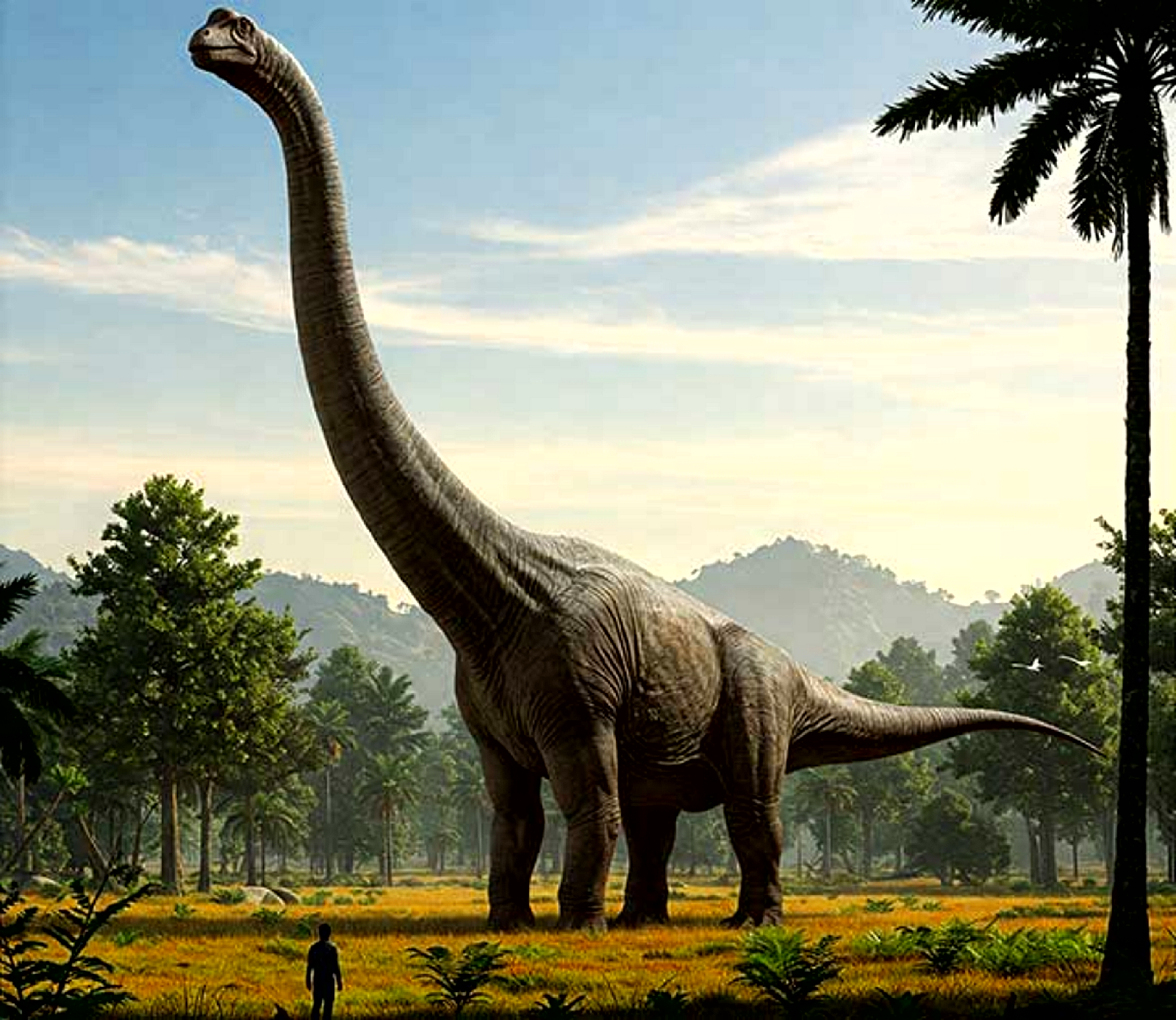The Mighty Giants of Patagonia: The Story of Patagotitan Mayorum paleontology
Long ago, during the Late Cretaceous period, the floodplains of Patagonia were home to one of the most awe-inspiring creatures to ever walk the Earth: Patagotitan mayorum
These colossal dinosaurs were the largest known animals to roam the land, measuring an astonishing 122 feet in length and weighing up to 77 metric tons—more than 10 African elephants combined.
Their story is one of growth, survival, and dominance in a prehistoric world teeming with life and danger.
Born Small, Destined for Greatness
Despite their eventual size, *Patagotitan* began life humbly. Hatchlings emerged from melon-sized eggs no bigger than a basketball.
These tiny dinosaurs were precocial, meaning they were relatively independent from birth. Instinctively, they grouped together with siblings and other juveniles in herds for protection against predators.
But even before they hatched, their eggs faced threats from a variety of cunning predators.
Among these predators were snakes like Alamitophis argentinus, a small madtsoiid snake native to Patagonia.
This snake likely slithered into sauropod nests to feast on eggs or newly hatched juveniles.
Fossil evidence from India suggests that similar snakes, such as Sanajeh indicus, actively preyed on sauropod nests by coiling around hatchlings or breaking into eggs for nourishment.
It’s likely that Alamitophis played a similar role in Patagonia’s ecosystems.
In addition to snakes, mammals like Reigitherium bunodontum —a small marsupial—may have been opportunistic egg thieves.
With sharp teeth and agile movements, these mammals could easily raid nests for a quick meal.
These predators posed significant risks to Patagotitan during its earliest and most vulnerable stages of life.
The early days of Patagotitan were fraught with danger, but those that survived this perilous stage began an extraordinary journey of growth.
A Race Against Time
Patagotitan grew at a staggering rate—16,000 times larger than their hatchling size—reaching adulthood in just 30 years.
Their rapid growth was essential to outpace predators and secure their place as untouchable giants in their ecosystem.
To fuel this growth, they consumed enormous amounts of plant material daily: conifers, cycads, ferns, and even tall grasses.
With their long necks and peg-like teeth, they stripped leaves from treetops and swallowed them whole. Feeding for up to 20 hours a day was necessary to sustain their massive bodies.
Life as Giants
Once adults, Patagotitan had few natural enemies. Their sheer size made them nearly invincible to predators, but it also came with challenges.
Fossil evidence suggests that these dinosaurs likely suffered from arthritis and other skeletal stress due to the immense weight their bodies carried over time.
Despite these physical strains, they lived relatively long lives for dinosaurs—around 40–50 years in total—with about 10–20 years spent as fully grown titans dominating their environment.
A Dangerous World
While adult Patagotitan had little to fear from predators, their habitat was far from peaceful.
Smaller carnivorous dinosaurs like Megaraptoridae prowled the floodplains, targeting juveniles or weakened individuals.
Abelisaurs like Niebla antiqua, medium-sized theropods with short arms and strong jaws, also lurked nearby as opportunistic hunters.
Snakes like Alamitophis argentinus posed threats specifically to eggs and hatchlings, while mammals such as Reigitherium bunodontum raided nests whenever possible.
The floodplains themselves were dynamic environments filled with rivers, wetlands, and periodic flooding that shaped the ecosystem—a world where survival required constant vigilance.
Titans of Their Time
Patagotitan mayorum was more than just a giant; it was an ecosystem engineer.
By trampling vegetation and spreading seeds through its dung, it influenced the landscape in profound ways.
These gentle giants lived in herds early on but likely adopted more solitary lifestyles as adults due to their immense size and need for food.
Their presence shaped the environment around them, leaving behind a legacy that paleontologists are still uncovering today.
The Legacy of Patagotitan
Though Patagotitan mayorum has been extinct for millions of years, its discovery has captivated scientists and enthusiasts alike.
Its bones tell a story of resilience, adaptation, and sheer biological wonder—a creature that grew quickly to survive but lived only a few decades as an adult before succumbing to the wear-and-tear of its massive body or environmental challenges.
The mighty Patagotitan mayorum reminds us of the incredible diversity of life that once flourished on Earth—a testament to nature's ability to create giants that ruled their time but eventually gave way to new eras of life.


Comments
Post a Comment